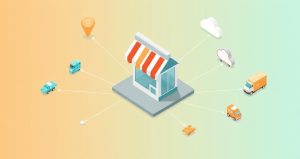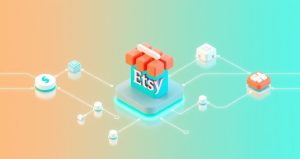Running a successful Etsy shop involves much more than creating beautiful products. It requires managing inventory, marketing, shipping, and customer service. As your business grows, these tasks can become overwhelming. This is where Etsy integrations come into play. These powerful third-party tools connect directly to your shop, automating repetitive tasks and streamlining your entire workflow. By leveraging the right applications, you can save valuable time, reduce manual errors, and focus on what you do best: creating.
What Are Etsy Integrations?
Etsy integrations are software applications and services that connect to your Etsy seller account through its API (Application Programming Interface). This connection allows for a seamless flow of data between your shop and the third-party tool. For example, when an order is placed on Etsy, an integration can automatically send the details to a shipping service or an accounting program. This eliminates the need for manual data entry, ensuring accuracy and efficiency in your daily operations and business management.
Key Integration Categories for Etsy Sellers
Choosing the right tools depends on your specific business model and biggest challenges. Most sellers find value by focusing on a few key areas where automation can have the greatest impact. Exploring these categories will help you identify which Etsy integrations can best support your shop’s growth. These tools are designed to handle specific functions, allowing you to build a customized system that works for you and supports your long-term goals as a creative entrepreneur.
1. Print-on-Demand (POD) Services
For sellers offering custom apparel, home decor, or accessories, print-on-demand Etsy integrations are essential. Services like Printful and Printify connect directly to your shop. When a customer buys a t-shirt or mug, the order is automatically sent to the POD provider. They then print, pack, and ship the product directly to your customer under your brand. This model eliminates the need to hold physical inventory, reducing financial risk and simplifying order fulfillment significantly.
2. Shipping and Fulfillment Tools
Managing shipping can be one of the most time-consuming aspects of running an Etsy shop. Integrations like Pirate Ship, ShipStation, and Shippo import your orders automatically, allowing you to buy and print shipping labels in bulk. These platforms often provide access to discounted postage rates that are cheaper than purchasing directly at the post office. They also automatically update your Etsy orders with tracking numbers, keeping your customers informed and improving your shop’s service metrics.
3. Accounting and Bookkeeping Software
Keeping track of finances is crucial for any business. Accounting Etsy integrations like QuickBooks Self-Employed, GoDaddy Bookkeeping, or Paper + Spark automatically import your sales, fees, and expenses from Etsy. This provides a clear, real-time overview of your shop’s financial health. These tools simplify tax preparation by categorizing transactions and calculating estimated quarterly taxes, saving you from hours of tedious spreadsheet management and ensuring you remain compliant.
4. Marketing and Social Media Automation
Promoting your products consistently is key to driving traffic and sales. Marketing integrations help automate this process. Tools like Outfy or Vela allow you to schedule social media posts featuring your Etsy listings across platforms like Instagram, Pinterest, and Facebook. Some of these applications can also help you create professional marketing videos or graphics from your product photos, making it easier to maintain an active and engaging online presence without spending all your time on content creation.
5. Email Marketing Platforms
Building a direct line of communication with your customers is a powerful strategy for long-term growth. While Etsy facilitates initial sales, an email list allows you to own your audience. Integrations with platforms like AWeber or Mailchimp make it easy to add Etsy customers to your mailing list. You can then send newsletters, announce new products, or offer exclusive promotions, encouraging repeat business and building a loyal community around your brand that exists independently of the Etsy platform.
6. Inventory and Listing Management
For sellers who operate on multiple platforms (e.g., Etsy and Shopify), managing inventory can be a major challenge. An oversell on one platform can lead to a canceled order and a poor customer experience on another. Inventory management Etsy integrations sync your stock levels across all channels. When an item sells on Etsy, the tool automatically updates the available quantity on your other stores, and vice versa. This prevents overselling and ensures your listings are always accurate.
How to Choose the Right Etsy Integration
With so many options available, selecting the right tools can feel daunting. Start by identifying your biggest pain point. Are you spending too much time packing orders? Is bookkeeping a constant headache? Choose an integration that solves your most pressing problem first. Before committing, always check recent reviews from other Etsy sellers. Look for feedback on reliability, customer support, and ease of use. A tool with positive, consistent reviews is generally a safer bet for your business operations.
Next, carefully evaluate the pricing structure. Many Etsy integrations offer a free trial or a limited free plan, which is a great way to test the service. Understand whether the cost is a flat monthly fee, a per-transaction charge, or based on your sales volume. Ensure the cost is justifiable based on the time you will save or the value it will add. Finally, prioritize security. These apps will have access to your sensitive shop and customer data, so choose reputable companies with clear privacy policies.
Conclusion: An Investment in Efficiency
Ultimately, Etsy integrations are more than just software; they are an investment in the efficiency and scalability of your business. By automating the administrative and logistical tasks that consume your time, you free yourself to focus on product development, customer engagement, and strategic growth. The right set of tools can transform your Etsy shop from a demanding hobby into a streamlined, professional operation. Start small, address your most significant needs, and build a system that empowers your creative journey.






